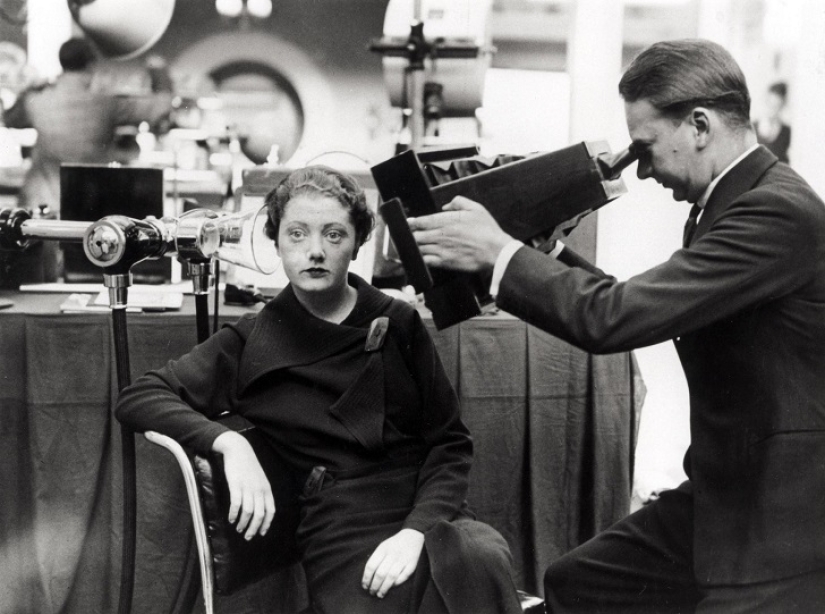Viagra, saccharin and other "scientific mistakes" that unexpectedly turned out to be revolutionary discoveries
Categories: Science
By Pictolic https://pictolic.com/article/viagra-saccharin-and-other-scientific-mistakes-that-unexpectedly-turned-out-to-be-revolutionary-discoveries.htmlMany great discoveries that changed the world forever were made completely by accident. Therefore, having set a clear goal for yourself, but having received an unexpected result, do not rush to be disappointed. It is quite possible that you have made a discovery that will surpass the original idea and help you get into history.

Until the middle of the XIX century, only very wealthy people could afford bright-colored clothes. All the dyes used by man were of natural origin and were difficult to produce and very unstable.

A revolution in the world of dyes occurred unexpectedly in 1856. August Wilhelm Hoffmann, a professor at the British Royal College of Chemistry, commissioned William Henry Perkin, one of his best students, to investigate a new substance isolated from coal tar. Aniline, which was the name of the new substance, Hoffman wanted to turn into quinine, indispensable in the malaria-stricken British colonies.
The black powder obtained from the resin was placed by a chemistry student Perkin in water and to his surprise he saw how the liquid turned bright blue before his eyes. Experiments with fabrics have shown that the resulting dye perfectly colors silk and cotton materials.

William Perkin named the dye movein, left college and opened the world's first factory for the production of synthetic dyes, which made him a very wealthy man. A little later, coal tar was used to produce dyes of other colors, which significantly crippled the business of manufacturers of natural dyes.
Chemist Konstantin Falberg from the American Johns Hopkins University, in 1879 studied petroleum bitumen. One evening, the scientist hurried home and left the laboratory, forgetting to wash his hands. At home, having started dinner, Falberg was surprised to notice that everything he touched acquired a sickly sweet taste.

Returning to the university laboratory, the chemist began to examine the retorts used in the experiments the day before, and found that a mixture of ammonia, phosphorus chloride and ortho-sulfobenzoic acid turned out to be sweet. Falberg named his discovery saccharin and a month later, in collaboration with his supervisor, Professor Ira Remsen, presented a report on the synthesis of a new substance to the scientific community.
This discovery did not make a special impression on the scientific world and its significance was appreciated only when Falberg opened an enterprise for the production of synthetic sugar. The substance quickly became popular - doctors prescribed it for migraines, and in 1907 saccharin began to be used as a sugar substitute in products for diabetics.
On November 8, 1895, the physicist Wilhelm Conrad Roentgen stayed late in his laboratory. Leaving, the scientist noticed that the screen of barium cyanide, which he used in experiments with cathode tubes, glows in the dark. X-ray noticed that he forgot to turn off one of the tubes. After switching off the cathode located behind the screen, the glow disappeared.

The physicist became interested in the phenomenon, and he began placing various substances and objects in front of the tube to find out whether they reflect rays or pass through. He placed an X-ray and his hand in front of the screen, receiving its translucent image on the screen. Placing a photographic plate behind the limb, the inventor received an X-ray.
The first visual result of the work was the image of the physicist's wife's hand. The scientist presented it at lectures and congresses held in different countries of the world. In 1901, Wilhelm Conrad Roentgen was awarded the Nobel Prize, and his discovery is called one of the most significant in the history of medicine.
In 1922, a bacteriologist from the UK, Alexander Fleming, during a cold, placed mucus from his nose in a Petri dish, where a culture of Micrococcus lysodeicticus was located. After a couple of days, the scientist remembered about the cup and decided to wash it, but was surprised to notice that the mucus destroyed some of the bacteria. So they discovered lysozyme— an antibacterial substance produced by the human body.

In 1928, Fleming also accidentally made another discovery. When he returned to the laboratory from vacation, he saw that one of the plates with a culture of staphylococci he had forgotten on the table was covered with mold. Upon closer examination, the bacteriologist saw that the mold, or rather the fungus Penicillium notatum, completely destroyed the bacteria on the plate. This is how penicillin was discovered, which still saves millions of people around the world every year.
Despite all the successes of medical science, such a disease as erectile dysfunction remained undefeated even at the end of the XX century. The problem was solved by scientists of the German pharmaceutical company Pfizer, who were engaged in the development of a drug for angina pectoris. Attacks of this disease worsen the supply of oxygen to the heart, so it was necessary to find a drug that dilates blood vessels.

The experimental sample UK-92480 repeatedly deceived the hopes of pharmacists, without giving the necessary effect. Moreover, after taking the medication, many volunteers complained of muscle pain. Another side effect, which was not noticed at first, was an improvement in erections in patients. Moreover, some men's strength returned after a long break.
New clinical trials with 3 thousand volunteers designed to study this effect turned out to be much more successful than the first ones, and in 1998 the first "Viagra" appeared in pharmacies around the world.
Recent articles

Markus Reugels is an incredibly talented German photographer who specializes in high-speed and macro photography. His photographs ...

Learn unusual and interesting facts about our planet and the creatures that inhabit it! -- >Ants, when dying, emit special ...

The Japanese craftswoman has honed her skills in working with wool so much that now her crafts - felted animal figurines - look as ...